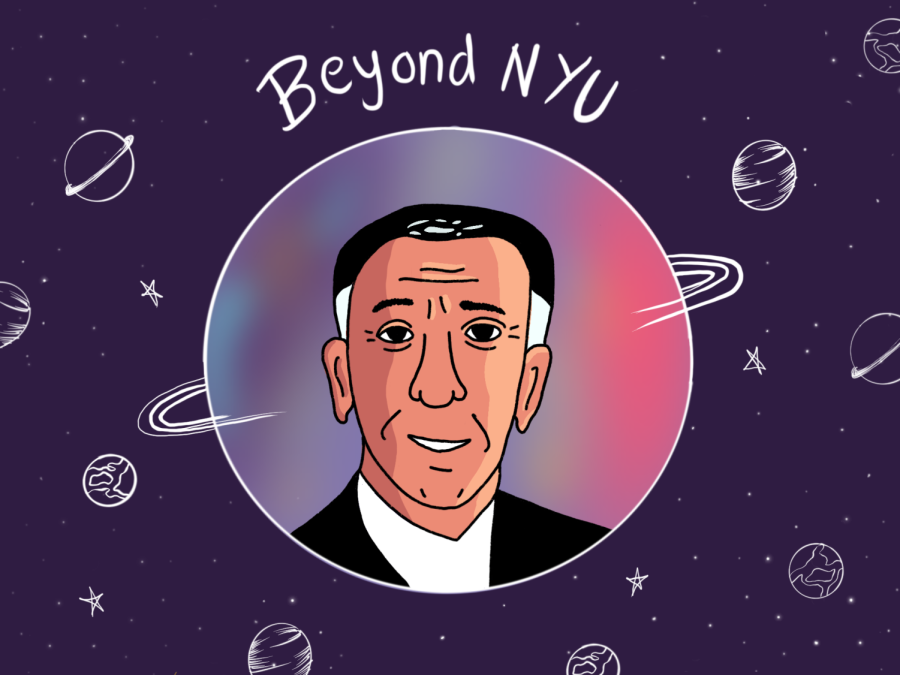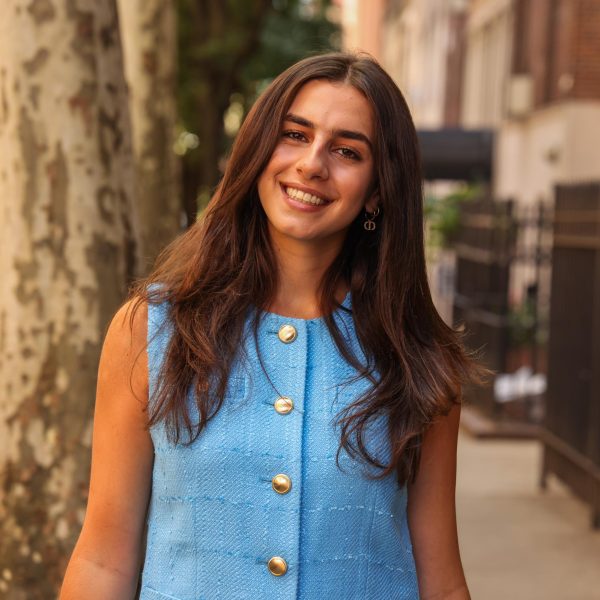Beyond NYU: Reaching new heights with structural engineering
Richard Tomasetti is involved in the design and engineering of some of the world’s most notable buildings, and helped with reconstruction following the 9/11 attacks. He now teaches engineering at Columbia University.
April 13, 2023
NYU alum Richard Tomasetti has helped to engineer some of the tallest buildings ever built. His construction company, which he cofounded with fellow NYU alum Charles Thornton, provided structural design for the Petronas Twin Towers in Malaysia — the tallest buildings in the world from 1998-2004 — and Taipei 101, which was the world’s tallest building between 2004 and 2010.
Tomasetti studied at NYU’s School of Engineering, which was in University Heights at the time. He earned a master’s degree in Science in Civil Engineering in 1965 before founding his company. He later attended the Polytechnic Institute of New York — now NYU’s Tandon School of Engineering — to earn his Ph.D. in the aerospace department, a degree he never finished. He now teaches as an adjunct professor at Columbia University’s Department of Civil Engineering and Engineering Mechanics.
Tomasetti developed the stressed skin tube structure, a new form of support for ultra-tall construction in high-rise buildings. In 2004, Richard was elected to the National Academy of Engineering, and received the Council on Tall Buildings Fazlur R. Khan Lifetime Achievement Medal with Thornton in 2012.
In an interview with WSN, Tomasetti spoke about his background in structural engineering, his role in the recovery efforts following the Sept. 11, 2001 attacks, and his thoughts on recent developments in the field of engineering.
This interview has been edited for length and clarity.
WSN: How did you become interested in the field of structural engineering?
Tomasetti: I was always interested in engineering, and all my hobbies were technical hobbies when I was a kid — anything from electrical engineering things to building boats that I could control remotely. I spent time in the library reading engineering and scientific texts, and a lot of it comes from the background of my father — he was a contractor. Ironically, the name of my father’s firm was T and T Contracting. The name of the firm we eventually created was Thornton Tomasetti.
WSN: How did you remain involved with NYU after you graduated?
Tomasetti: I never stayed active in NYU as an alum until Dr. Matthew Santirocco invited me to an NYU alumni function to talk about engineering at NYU. I started to develop a relationship with him, and the next thing I knew, I became the token engineer on Dr. Santirocco’s advisory board for the College of Arts and Science. He was very successful in driving me back in.
Due to the involvement of Santirocco, the interim dean of CAS, Tomasetti ended up teaching the “Engineering of Major Architecture” honors seminar for two years, and was involved in establishing a scholarship celebrating the merger of NYU and what is now the Tandon School of Engineering.
One of the projects closest to Tomasetti’s heart was the Roosevelt Island Tramway in New York City, which was the first use of an aerial tramway as a part of a transportation system in North America. His firm also managed all the engineering for the search, rescue, recovery and cleanup following the Sept. 11, 2001 attacks.
WSN: What was your initial reaction upon hearing about the 9/11 attacks?
Tomasetti: I was sitting in a meeting uptown at 7:30 with the New York Building Congress, of which I was a member of their board and one of their committees. The plane struck, and someone ran into the meeting saying that a plane hit the World Trade Center. Then we started seeing it on television, and another plane hit the World Trade Center. At that time, we had no idea how big these planes were, and I remember getting asked if I thought those buildings would collapse because I was the only structural engineer in the room. I said, “I don’t think they can collapse, because they have a very redundant structure,” and sure enough, I was wrong because I didn’t realize they were 767s full of fuel going at something like 600 miles per hour.
The team was involved in inspecting and assessing over 400 buildings in lower Manhattan to analyze the extent of the damage caused by the attacks. It was also responsible for designing temporary stabilization measures, examining construction equipment support and survey monitoring of damaged structures. Tomasetti said this effort took over six years to complete, and involved collaboration with dozens of other firms.
WSN: How did your team at Thornton Tomasetti respond to the attacks?
Tomasetti: We got a call from the Department of Design and Construction of New York City who asked us if we could help them, because they needed a lot of engineers down there. They wanted us to put together a group of engineers to send, and I remember telling them, ‘Fine, we can do that. We will manage the people down there.’ At 4 p.m. on 9/11, I found myself in a van with another associate from my firm and four contractors, and we were all driven down with a police escort to start the process of figuring out how to help the firemen with the rescue and cleaning up the site. We were there until late that night, trying to figure out how the engineers and contractors could work together. Then, they asked us if we would hold the main contract and hire all the other engineers because they wanted a single source responsible.
At Columbia University, one of the lectures Tomasetti gives as a part of his course covers the lessons he learned from the World Trade Center. He mentioned that many of his lessons discuss fire protection strategies used by engineers, and emphasize redundancy — the intentional construction of multiple structures with the same function, so that if one fails, another will still operate.
WSN: How did the attacks affect the industry of structural engineering?
Tomasetti: As the planes, full of fuel, crashed into the buildings and destroyed some structures, what was worse was they knocked off the fire protection of the steel in the building in many areas. The plane full of fuel was spreading fuel around the top floors, causing a major fire, and heating the steel to the point where it started to weaken — and that’s what collapsed the buildings. One of the things that was learned was fire protection needed to be more resilient to terrorist attacks. All the disciplines also started studying better ways of having egresses, mechanical and electrical systems that would handle dust in a better way, and additional types of redundancy that could make the buildings more resilient.
Regarding recent developments in the field of engineering, Tomasetti said he is excited about improvements in performance-based fire engineering, a practice that analyzes how fire can affect the heat distribution in a building. He also mentioned that many high-rise buildings are now built using concrete rather than steel due to the material’s ability to minimize movement caused by wind in tall structures.
WSN: How do engineers account for natural forces in high-rises?
Tomasetti: If you look at Taipei 101, which is done primarily in steel, it has a tuned mass damper on the top, which is basically a 600 ton steel ball that hangs like a pendulum and sways in the opposite direction that the building sways when the wind starts hitting the building. That counteracts the movement of the building, and reduces the accelerations to a tolerable level, so people can be in the building comfortably.
Tomasetti said that the firm’s focus now is to remain ahead of the curve in not only the work they do, but the way that engineering is performed. He said the firm will continue its philosophy of ensuring that each engineer, architect and individual working for Thornton Tomasetti feel as if they are a part of a community, and that what they are doing truly matters.
WSN: Do you have any advice for students interested in pursuing a career in structural engineering?
Tomasetti: I tell a lot of my students and people that have worked for me over the years that when you go for your first job, you should look for a place that will give you the most experience in your first three or four years — not the highest salary. This will help cement your career going forward, and it should be in an area that you love. If you want to be successful and be a principal in a firm in the future, always act and perform the work as if you own the firm. Don’t just think like an employee trying to get everything you can as a benefit out of a firm. Think in terms of how an owner would approach something.
Contact Adrianna Nehme at [email protected].

























































































































































